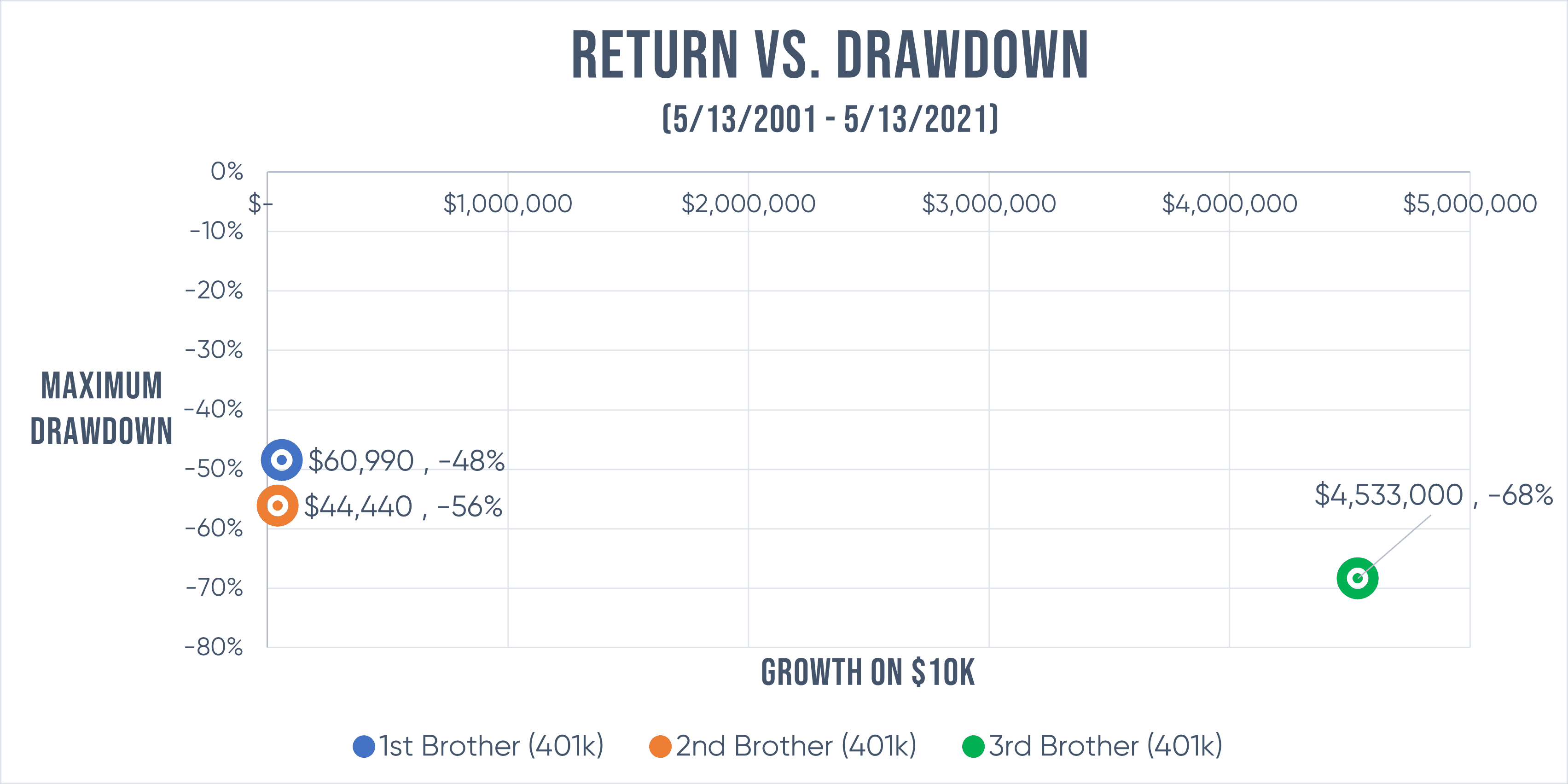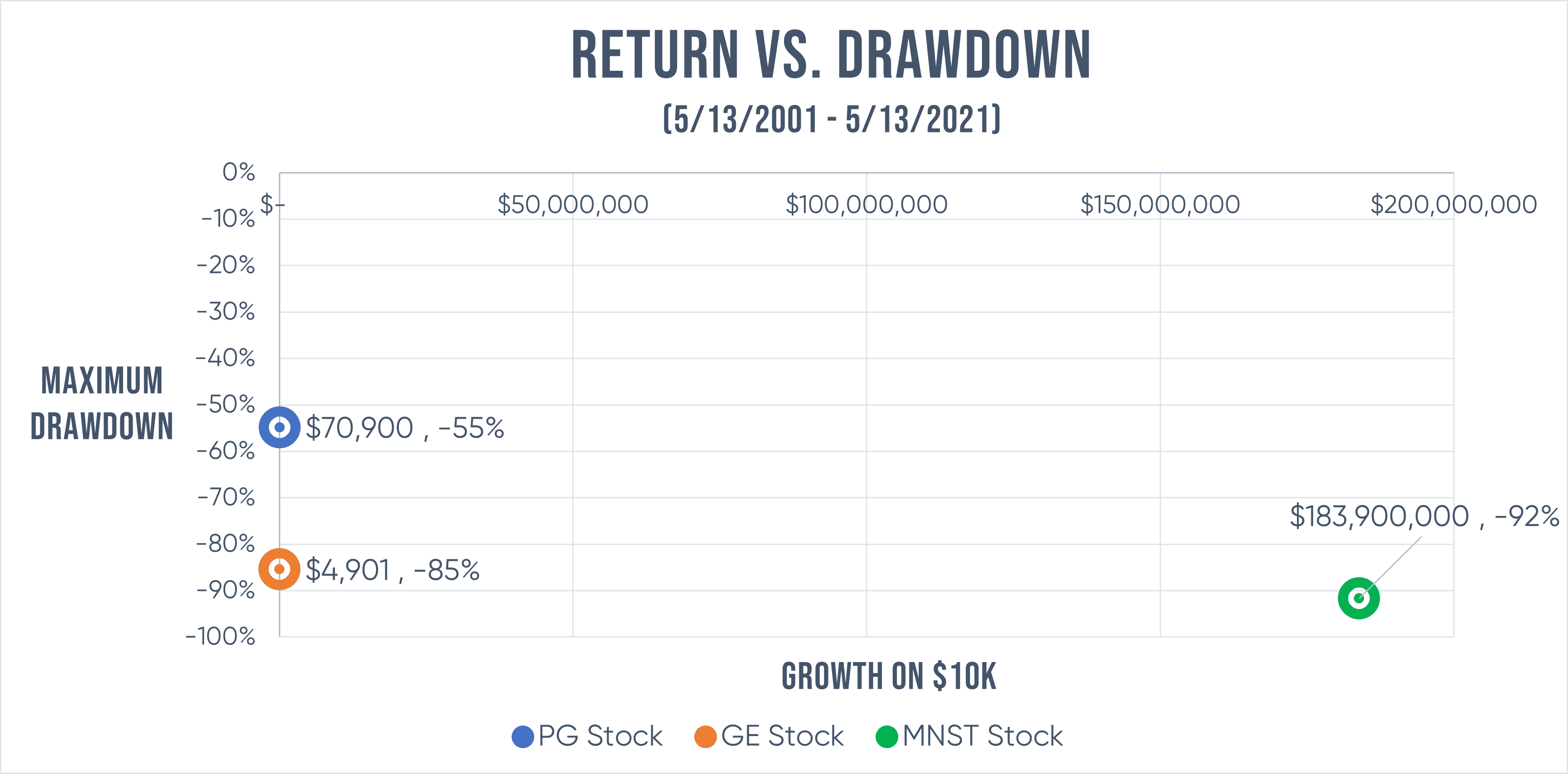What Does It Mean To Have A Diversified Portfolio?
Blog post
05/26/21There are many misconceptions about diversification and what it means to have a diversified portfolio. One of the questions I get a lot is: “I own XYZ stock. Is it a good time to sell it?”. Usually, my immediate follow up, even before looking into the stock, is how big of a position is the stock in your portfolio and where would you put the proceeds? Not only is this usually a loaded question, but it is also incomplete. While most people fixate on the narrative of the stock, they ignore portfolio construction and diversification. Diversification can provide a portfolio benefits that should not be ignored. I intend to touch on some of those benefits in this blog.
What is diversification?
Wikipedia defines diversification as: “The process of allocating capital in a way that reduces exposure to any one asset or risk.” I describe diversification as defense in your portfolio. Diversification defends against price volatility, which in turn reduces portfolio drawdowns. This is a straightforward way to mitigate risk.
Should I diversify my portfolio?
While diversification is sensible and prudent, that does not mean a portfolio with diversification is superior to one without diversification. For an investor with clear clairvoyance and tolerance/willingness to lose it all, diversification is a hindrance on return. This investor does not need to defend against price volatility.
In most cases however, this situation is unrealistic. Price volatility leads investors to exhibit suboptimal investment decisions because of emotional biases. Not only that, but no one has a crystal ball into the future. By recognizing these shortcomings, diversification can be a powerful tool in an investor’s arsenal. Here are some examples:
Example 1:

This is your textbox diversification example. This graph looks at an extended period (Sept 1976-present). Included are three of the most common and widely used asset classes in history (Stocks – red, Investment Grade Bonds – blue, and Gold – yellow). You can see the total return growth of a $10,000 investment on the x-axis and the maximum drawdown of each investment on the y-axis. Maximum drawdown is the largest decline from peak to trough, which can be a measure of the bad volatility in a portfolio.
As you can see, stocks had the total highest return ($10k grew to more than $1.2 mil), but the portfolio also had a max drawdown (55%). On the other end of the spectrum, a $10k investment in Investment Grade Bonds only grew to $190k but had the lowest max drawdown of 15%. Your investment in gold over the past 45 years grew to $574k, but it had even more volatility than stocks (79% max drawdown).
The other two dots on the graph represents equally diversified portfolios of stocks, bonds, and gold. These two portfolios fit neatly in the middle of the other three dots. This example shows that by diversifying a portfolio, you smooth out both volatility and return. What is interesting is the significant benefit you realize by rebalancing the portfolio. By rebalancing the portfolio each year back to an equal weight among these asset classes, the purple dot portfolio grows by over $300k (compared to the green dot portfolio which does not rebalance annually) and reduces the maximum drawdown by about 10%. Rebalancing is a direct application of diversification, and its benefits are clear in this case.
It can be easy to look at this example and think you can stomach losses to achieve the greatest return. Why not just invest all in one asset like stocks? Well, hindsight is 20/20 and the future is not that clear. The next example will provide a scenario where future results are less clear.
Example 2:
There are 3 brothers, triplets, who all began working in 2001:
-1st brother graduated summa cum laude at Cal Berkley and began working out of school as a marketing director at Proctor and Gamble.
-2nd brother studied aerospace and aeronautical engineering at University of Southern Cal and went on to get hired by General Electric.
-3rd brother dropped out of college to surf and got a job working at a Hansen’s Juice bottling plant to help pay the bills.
Scenario A:
Each of the brothers invest $10,000 (a gift from their grandfather) in their 401k on their first day of work. They diversify the 401k by putting 25% in their respective company stock, 25% in bonds, 25% in the stock market, and 25% in gold.
Scenario B:
Each brother puts their entire $10k into their company stock in their 401k.
Scenario A:

Scenario B:

Over time, the brothers’ portfolios would have had varying results. Results no one would have predicted.
Over the past 20 years these stocks have moved in different directions. PG has been a very consistent performer, GE stock has gone through tough times, and Hansen Juices later became Monster Beverage, which has been one of the best performing stocks over the past 20 years. While the performance of Monster stock is an outlier, it is illustrative that the future is not always clear.
The dispersion among the brothers’ portfolio values and volatility are stark, but they became even more pronounced without diversification. Here are the differences between the two scenarios: Brother 1’s portfolio would have been $10k more had he just bought PG stock, but his max drawdown would have also been 10% greater. Brother 2 would have lost over 50% of his investment had he not diversified (a $40k difference) and would have had a drawdown of 85% (compared to 56%). And brother 3’s MNST stock would have been worth almost $184 mil today ($179mil difference), but he also would have had to stomach a drawdown of 92% (compared to 68%).
It is important to note that in Scenario A, all three brothers’ portfolios would have generated respectable returns. Sure, brother 3 may not have $184mil of MNST stock, but he can still retire after 20 years of work and surf in peace. On the other hand, when you take out that diversification, the variance of the portfolios dramatically increases. While the investment in GE may have looked the most solid back in 2001, it was not, and removing that diversification came at a cost. And while the volatility in GE and MNST were not created equal, more times than not, volatility like this leads to suboptimal investment decisions. For example, buying more GE on the way down or selling MNST on the way up.
Conclusion
The one constant among the examples above is that diversification produced a lower maximum drawdown on the portfolios. While diversification may have a negative effect on return, it clearly defends against price volatility and in turn loss of portfolio value. In the face of uncertainty and emotional biases, using diversification is both prudent and healthy. Here at THOR Wealth Management, diversification is one of the tenants of our portfolio construction process. If you want to learn more about our investment process, please check out that section of our website or watch our market updates to hear our thoughts on the markets.